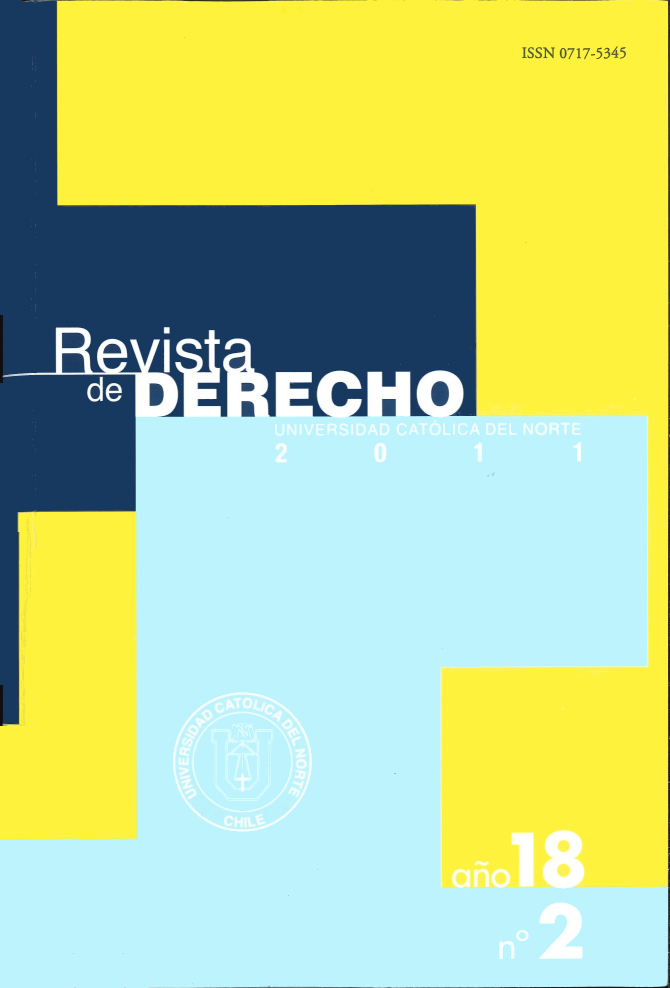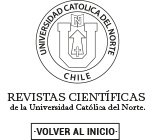Contribution of the judicial dissent model to the political system:
Judicial pluralism and democratic debate
Keywords:
Dissent, Separate vote, Constitutional power, Judicial transparency, Judicial legitimacyAbstract
In a comparative law perspective there are differences related to the possibility of publishing the dissenting opinions and concurrences that exist inside collegiate courts. Some systems follow a tradition of secrecy, while others follow transparency. This work analyzes the benefits that the dissenting opinion system produces for the political system, studying the role of the judges inside it. It explores the relation between this debate and a perspective of judicial legitimacy based on accountability and less related to the professionalization and hierarchy of the judicature. Te paper proposes a framework for discussing the problem of judicial transparency inside those countries that accept constitutional democracy and judicial review, offering a line of research and opening perspectives for future papers.
References
ATRIA, Fernando (1993). "Tribunal Constitucional y Objeción Democrática". Revista Chilena de Derecho, vol. 20, N° 2-3, pp. 367-378.
________ (2000) Revisión Judicial: el Síndrome de la Víctima Insatisfecha. Estudios Públicos, N° 79. Disponible en: http://www.cepchile.cl/dms/lang_1/doc_1081.htmlLinks ] Arial, Helvetica, sans-serif">
BENNETT, Robert W. (1991). "A Dissent on Dissent". Judicature, vol. 74; N° 5, pp. 255-260.
BRENNAN, William J. (1986). "In Defense of Dissents". The Hastings Law Journal, vol. 37, pp. 427-438.
CÁMARA VILLAR, Gregorio (1993). Votos particulares y derechos fundamentales en la práctica del Tribunal Constitucional Español: 1981-199. Madrid: Ministerio de Justicia, pp. 450.
CAPPELLATTI, Mauro, MERRYMAN, John Henry, PERILLO, Joseph M. (1965). The Italian Legal System. 1a edición. Stanford, California: Stanford University Press.
CARDOZO, Benjamin N. (1939). "Law and Literature [comments]". Yale Law Journal, vol. 48, pp. 489-507
CARROL, Royce and TIEDE, Lydia Brashear (2010). "Conflict on Chile's Constitutional Tribunal". 5th Annual Conference on Empirical Legal Studies Paper. Disponible en: http://ssrn.com/abstract=1630986
CORREA, Rodrigo (2009): "Vulgarización por constitucionalización". Facultad de Derecho Universidad de Chile: Democracia y Derechos Fundamentales desde la Filosofía Política. Santiago: Editorial Jurídica de Chile, pp. 35-54.
CROSS, Frank B. and TILLER, Emerson H. (1998). "Judicial Partisanship and Obedience to Legal Doctrine: Whistleblowing on the Federal Courts of Appeals". Yale Law Journal, vol. 107, pp. 2155-2176.
DOUGLAS, William O. (1948). "The Dissent: A Safeguard of Democracy". Journal of the American Judicature Society, vol. 32, pp. 104-107.
DWORKIN, Ronald (1985) A Matter of Principle. 1a edición. New York: Oxford University Press, pp. 425.
EPSTEIN, Lee, SEGAL, Jeffrey and SPAETH, Harold J. (2001). "The Norm of Consensus of the U.S. Supreme Court". American Journal of Political Science, vol. 45, pp. 362-377.
EPSTEIN, Lee, LANDES, William M. and POSNER, Richard A. (2010). "Why (and When) Judges Dissent: A Theoretical and Empirical Analysis". U of Chicago Law & Economics, Olin Working Paper No. 510. Disponible en: http://ssrn.com/abstract=1542834
EVANS, EVANS A. (1938). "The Dissenting Opinion. Its use and abuse". Missouri Law Review, vol. 3, pp. 120-142.
FAVOREU, Louis Joseph (2001). "La Constitucionalización del Derecho". Revista de Derecho (Valdivia), vol. 12, no.1, pp. 31-43. Disponible en: http://mingaonline.uach.cl/pdf/revider/v12n1/art03.pdf
FERNÁNDEZ SEGADO, Francisco (2009). "La Recepción del Sondervotumen Alemania". Revista Iberoamericana de Derecho Procesal Constitucional, N° 12, pp. 77-119.
FLETCHER, George P., SHEPPARD, Steve (2005) American Law in a Global Context. 1a edición. New York: Oxford University Press, pp. 682.
FLETCHER, William A. (2009) "Dissent". Golden Gate University Law Review, vol. 39, pp. 291-300.
FRIEDMAN, Lawrence, et alii (1981). "State Supreme Courts: A Century of Style and Citation". Stanford Law Review, vol. 33, pp. 773-818.
GARCÍA, José F. y SOTO, Sebastián (2009). "Una Mirada Económica al Diseño Constitucional Chileno: Impacto sobre el proceso legislativo y acción de los grupos de interés". Latin American and Caribbean Law and Economics Association. Disponible en: http://escholarship.org/uc/item/09w904qs;jsessionid=B01EA71528EB2C9A9ElD8E9C71743BA4#page-2, pp. 33-86.
GIBSON, James L. (1989). "Understandings of Justice: Institutional Legitimacy, Procedural Justice, and Political Tolerance". Law & Society Review, vol. 23, N° 3, pp. 469-496.
GIBSON, James L., CALDEIRA, Gregory A. and SPENCE, Lester K. (2005). "Why do People Accept Public Policies they Oppose? Testing Legitimacy Theory with a Survey-Based Experiment". Political Research Quarterly, vol. 58, N° 2, pp. 187-201
GLENN, H. Patrick (2007) Legal Traditions of the World. 3a edición. New York: Oxford University Press, pp. 395.
GOUTAL, Jean Louis (1976). "Characteristics of Judicial Style in France, Britain and the U.S.A. ". The American Journal of Comparative Law, vol. 24, pp. 43-72.
HABERLE, Peter (2001). "La Jurisdicción Constitucional institucionalizada en el Estado constitucional". Anuario iberoamericano de justicia constitucional, N° 5, pp. 169-181.
HART, H.L.A. (1961 y 1994) The Concept of Law. 1a y 2a edición. New York: Oxford University Press, pp. 262.
KLARMAN, Michael J. (2007) Brown V. Board of Education and the Civil Rights Movement. The abridged edition of "From Jim Crow to Civil Rights: The Supreme Court and The Struggle for Racial Equality". 2a edición. New York: Oxford University Press, pp. 284.
KELSEN, Hans (1994) Teoría pura del derecho. Introducción a la ciencia del derecho. Traducción de: Moisés Nilve. 28a edición. Buenos Aires: Editorial Universitaria de Buenos Aires, pp. 155-161.
JOHNSON, Charles A. (1979). "Lower Court Reactions to Supreme Court Decisions: A Quantitative Examination". American Journal of Political Science, Vol. 23, No° 4: pp. 792-804.
LASSER, Michel (2004) Judicial Deliberations. A Comparative Analysis of Judicial Transparency and Legitimacy. 1a edición. New York: Oxford University Press, pp. 382
________ (2009). Transforming Deliberations. En HULS, Nick, ADAMS, Maurice, y BOMHOFF, Jacco (editores): The Legitimacy of Highest Courts' Rulings. Judicial Deliberation and Beyond. 1a edición. New York: Cambridge University Press, pp. 33-53.
LITTLE, Rory (1999). "Reading Justice Brennan: Is There a "Right" to Dissent?" Hastings Law Journal, vol. 50, pp. 683-704
LOTH, Marc A (2009) "Courts in a Quest for Legitimacy: a Comparative Approach". En HULS, Nick, ADAMS, Maurice, y BOMHOFF, Jacco (editores): The Legitimacy of Highest Courts' Rulings. Judicial Deliberation and Beyond. 1a edición. New York: Cambridge University Press, pp. 267-288.
LYNCH, Andrew (2004). "Is Judicial Dissent Constitutionally Protected?" Macquarie Law Journal, vol. 4, pp. 81-104.
________ (2004). "Taking Delight in Being Contrary, Worried about Being a Loner or Simply Indifferent: How do Judges really feel about Dissent?" Federal Law Review, vol. 32, pp. 311-329
MEDINA RUBIO, Ricardo (2000) "La discrepancia en el seno del Tribunal Constitucional". Corts: Anuario de Derecho Parlamentario, N° 9: pp. 305-306.
MERRYMAN, John Henry and PÉREZ-PERDOMO, Rogelio (2007) The Civil Law Tradition. An Introduction to the Legal Systems of Europe and Latin America. 3a edición. Stanford, California: Stanford University Press, pp. 173.
MILL, John Stuart (1989) On liberty and other writings. Editado por Stefan Collini. 1a edición (edición original 1859). New York: Cambridge University Press, pp. 289.
MUIR, William Ker (1973) Law and Attitude change. 1a edición. Chicago: Chicago University Press, pp. 170.
NADELMANN, Kurt H. (1959). "The Judicial Dissent. Publication v. Secrecy". The American Journal of Comparative Law, vol. 8: pp. 413-432.
________ (1964). "Non-Disclosure of Dissents in Constitutional Courts: Italy and West Germany". The American Journal of Comparative Law, vol. 13, pp. 268-276.
NOGUEIRA ALCALÁ, Humberto (2005) "La Integración y el Estatuto Jurídico del Tribunal Constitucional después de la Reforma Constitucional de 2005", Foro Constitucional Iberoamericano, N° 11: pp. 136-148.
NÚÑEZ POBLETE, Manuel A. (2010) "Sobre la designación como ministros de Estado de los parlamentarios en ejercicio. El fallo "Tohá" y el estatuto constitucional de los parlamentarios y los ministros de Estado dentro de nuestro sistema presidencial". En FERMANDOIS, Arturo, y DELAVEAU, Rodrigo (editores): Sentencias Destacadas 2009. Santiago, Ediciones Libertad y Desarrollo, pp. 97-116
PETERSON, Steven A. (1981). "Dissent in American Courts". The Journal of Politics, vol. 43, N° 2: pp. 412-434.
PINNA, Andrea (2009) "Filtering Applications, Number of Judgments delivered and Judicial Discourse by Supreme Courts: Some Thoughts Based on the French Example". En HULS, Nick, ADAMS, Maurice, y BOMHOFF, Jacco (editores): The Legitimacy of Highest Courts' Rulings. Judicial Deliberation and Beyond. 1a edición. New York: Cambridge University Press, pp. 175-187.
POSNER, Richard A. (1993). "What do Judges and Justices Maximize? (The Same Thing Everybody Else) ". Supreme Court Economic Review, vol. 3, pp. 1-41.
________ (1998) El análisis económico del derecho. Traducción de Eduardo L. Suárez. 1a edición. México, D.F: Editorial Fondo de Cultura Económica de México, pp. 682
________ (2008) How Judges Think. 1a edición. Harvard, Boston: Harvard University Press, pp. 387.
POUND, Roscoe (1953). "Cacoethes Dissentiendi: The Heated Judicial Dissent". American Bar Association Journal, vol. 39, pp. 794-797.
PRITCHETT, C. Herman (1941). "Divisions of Opinion Among Justices of the US Supreme Court, 1939-1941". The American Political Science Review, vol.35, pp. 890-898.
RAWLS, John (1999) The revised edition of "A theory of justice". Harvard, Boston: Harvard university press, pp. 607.
REHNQUIST, William H. (1966). "The Supreme Court: The First Hundred Years Were the Hardest". University of Miami Law Review, vol. 42, pp. 475-490.
RING, Kevin A. (2004) Scalia Dissents: Writings of the Supreme Court's Wittiest, most Outspoken Justice. 1a edición. Washington DC: Regnery Publishing, Inc.
RODRÍGUEZ GREZ, Pablo (1999) El derecho como creación colectiva. Santiago: Editorial Universidad del Desarrollo Ediciones Jurídicas, pp. 139-147.
ROUSSEAU, Dominique (2002) La Justicia Constitucional en Europa. 2a edición. Madrid: Centro de Estudios Políticos y Constitucionales, pp. 110.
SANDERS, Joe W. (1963). "The Role of Dissenting Opinions in Louisiana". Louisiana Law Review, vol. 23, pp. 673-679
SCALIA, Antonin (1994). "The Dissenting Opinion". Journal of Supreme Court History, pp. 33-44.
SEGAL, Jeffrey A., SAETH, Harold J. (1996). "The Influence of Stare Decisis on the Votes of United States Supreme Court Justices". American Journal of Political Science, vol.40, pp. 971-1003.
SCHOENBERGER, Allen (2009). "Change in the European Civil Law Systems: infiltration of the Anglo-American Case Law system of Precedent into the Civil Law System". Loyola Law Review, vol. 55, pp. 5-21.
SQUELLA NARDUCCI, Agustín (2000) Introducción al derecho. 1a edición. Santiago: Editorial Jurídica de Chile, pp. 576.
STONE, Harlan F. (1943). "Dissenting Opinions are not Without Value". Journal of the American Judicature Society, vol. 26, p. 78.
SUNSTEIN, Cass (2005) Why Societies Need Dissent. 1a edición. Harvard, Boston: Harvard University Press, pp. 246.
TUSHNET, Mark (2006) "The Supreme Court and the National Political Order: Collaboration and Confrontation". En KAHN, Ronald and KERSH, Ken (editores): The Supreme Court and American Political Development. Ia edición. Kansas: Kansas University Press, pp. 117-138.
TUSHNET, Mark V. (editor) (2008) I Dissent: great Opposing Opinions in Landmark Supreme Court Cases. 1a edición. Boston: Beacon Press, pp. 229.
VERDUGO R., Sergio (2009). "Regla de Mayoría y democracia: el caso de las leyes orgánicas constitucionales". Revista actualidad jurídica (Universidad del Desarrollo), N° 20, pp. 597-633.
______ (2008). "La declaración de inconstitucionalidad de las leyes como control represivo abstracto". Revista Actualidad Jurídica (Universidad del Desarrollo), N° 18, pp. 247-297.
WALDRON, Jeremy (2001) Law and Disagreement. 1a edición. New York: Oxford University Press, pp. 344.
WILLIAMS BENAVENTE, Jaime (1999) Lecciones de introducción al derecho. 3a edición. Santiago: Editorial Ediciones Fundación de Ciencias Humanas, pp. 251 y 252.
YARBROUGH, Tinsley E. (1992) John Marshall Harlan: great dissenter of the Warren Court. 1a edición. New York: Oxford University Press, pp. 395.
ZAPATA LARRAÍN, Patricio (2008) Justicia Constitucional. Teoría y práctica en el derecho chileno y comparado. Santiago: Editorial Jurídica, pp. 623.
Published
How to Cite
Issue
Section
Aquellos autores/as que tengan publicaciones con esta revista, aceptan los términos siguientes:
- Los autores/as conservarán sus derechos de autor y garantizarán a la revista el derecho de primera publicación de su obra, el cuál estará simultáneamente sujeto a la Licencia de reconocimiento de Creative Commons que permite a terceros compartir la obra siempre que se indique su autor y su primera publicación esta revista.
- Los autores/as podrán adoptar otros acuerdos de licencia no exclusiva de distribución de la versión de la obra publicada (p. ej.: depositarla en un archivo telemático institucional o publicarla en un volumen monográfico) siempre que se indique la publicación inicial en esta revista.
- Se permite y recomienda a los autores/as difundir su obra a través de Internet (p. ej.: en archivos telemáticos institucionales o en su página web) antes y durante el proceso de envío, lo cual puede producir intercambios interesantes y aumentar las citas de la obra publicada. (Véase El efecto del acceso abierto)





_(1).png)












